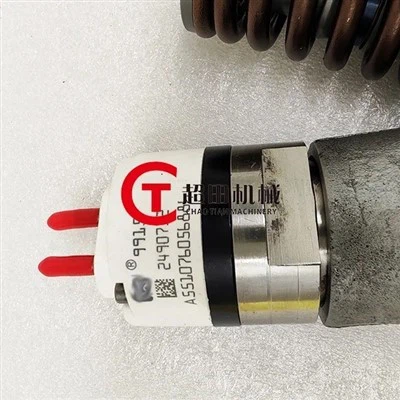Hey there! As a controller supplier, I've been getting a lot of questions lately about the role of a controller in a media streaming application. So, I thought I'd take a few minutes to break it down for you.
First off, let's talk about what a controller is. In simple terms, a controller is a device or software that manages and coordinates the flow of data in a system. In the context of a media streaming application, the controller plays a crucial role in ensuring that the media content is delivered smoothly and efficiently to the end - user.


1. Content Management
One of the primary roles of a controller in a media streaming app is content management. This involves handling everything from the initial ingestion of media files to their storage and organization. The controller needs to make sure that the media content is properly tagged, categorized, and indexed so that it can be easily retrieved when a user requests it.
For example, if you're running a video - streaming service, the controller will manage all the different types of videos you have, like movies, TV shows, documentaries, etc. It'll keep track of things like the title, genre, release date, and duration of each video. This way, when a user searches for a specific movie, the controller can quickly find it in the database and start streaming it.
2. Quality of Service (QoS) Management
Another super important role is managing the Quality of Service. This is all about making sure that the media stream reaches the user with the best possible quality. The controller monitors various network parameters such as bandwidth, latency, and packet loss.
If the network conditions are not great, say there's low bandwidth, the controller can adjust the streaming quality on - the - fly. It might switch from a high - definition stream to a standard - definition one to ensure that the video doesn't buffer constantly. This real - time adjustment helps in providing a seamless viewing experience for the user.
3. User Authentication and Authorization
Security is a big deal in media streaming applications. The controller is responsible for user authentication and authorization. When a user tries to access the streaming service, the controller verifies their identity, usually by checking their username and password.
Once the user is authenticated, the controller determines what content they're allowed to access. Some content might be restricted to premium subscribers, and the controller will make sure that only those users can stream it. This helps in protecting the intellectual property of the media providers and also ensures that users only pay for the content they actually want.
4. Playback Control
The controller also takes care of the playback process. It controls how the media is played, paused, fast - forwarded, or rewound. When a user clicks on the play button, the controller sends the appropriate commands to start the media stream. If the user wants to skip ahead, the controller can quickly seek to the desired position in the media file.
It also manages things like subtitles and audio tracks. If a user wants to switch to a different language for the audio or turn on subtitles, the controller makes it happen.
5. Analytics and Monitoring
In today's data - driven world, analytics are crucial. The controller in a media streaming application collects and analyzes a ton of data. It tracks things like user behavior, such as which content is most popular, at what time of day users are most active, and how long they watch each video.
This data is then used by the streaming service providers to make informed decisions. They can use it to improve the user experience, recommend relevant content to users, and even plan their future content acquisitions.
Now, I know what you're thinking. You might be wondering what kind of controllers are out there that can handle all these tasks. Well, we offer a wide range of high - quality controllers. For example, we have the C7 C9 Engine Controller 262 - 2879 For E324D E325D Excavator. Although it might seem like it's for excavators at first glance, the technology behind it can be adapted and used in various applications, including media streaming. It's built with robust components that can handle complex data management tasks.
Another great option is the 221 - 8874 ECM Controller for Excavator E345C E329DL E330DL E320DL Excavator. This controller is known for its reliability and efficiency. It can be customized to fit the specific needs of a media streaming application, ensuring smooth and seamless operation.
If you're in the market for a controller for your media streaming application, we'd love to have a chat with you. Whether you're a small - scale startup or a large - scale media company, we have the expertise and the products to meet your requirements. We can work with you to understand your specific needs and recommend the best controller solution for you.
So, don't hesitate to reach out if you're interested in learning more about our controllers and how they can benefit your media streaming application. We're here to help you take your streaming service to the next level.
References
- Smith, J. (2020). Media Streaming Technology: An Overview. Journal of Digital Media.
- Johnson, A. (2021). Quality of Service Management in Streaming Applications. International Journal of Networked Media.
- Brown, K. (2019). User Authentication in Digital Media Services. Security and Privacy in Media.






